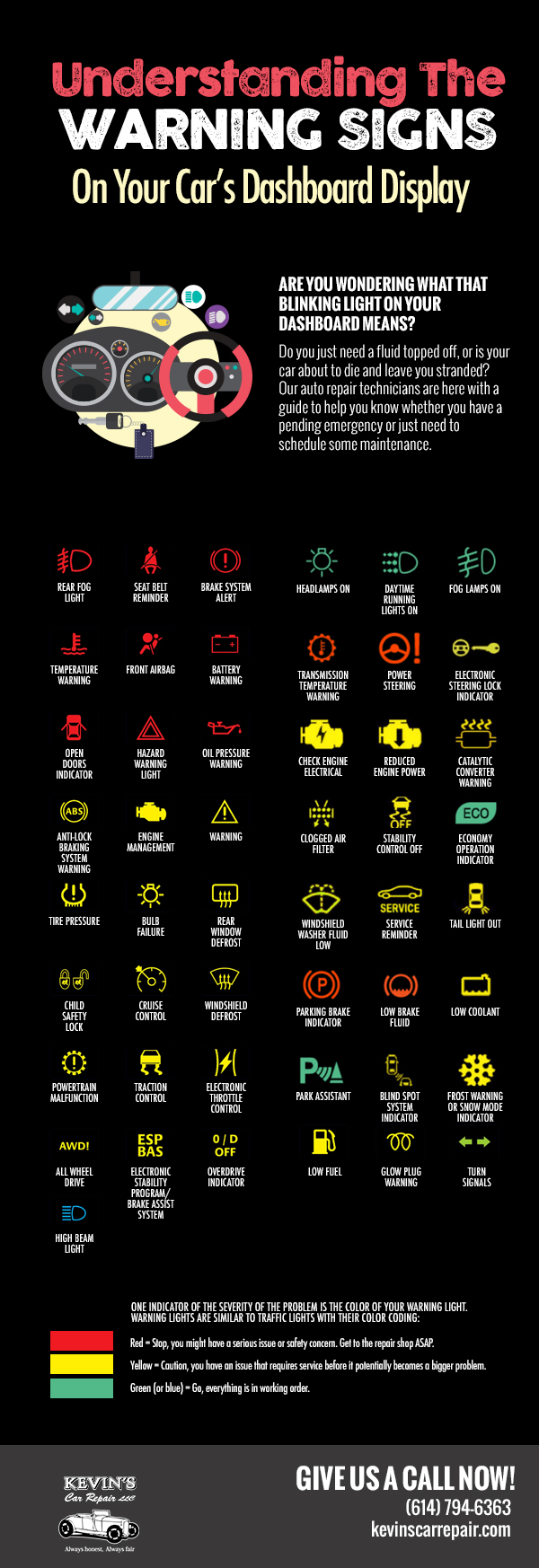Seeking Clearness On The Caution Lights Presented On Your Car'S Dashboard? Discover How They Associate With Your Car'S Health And Wellness
Seeking Clearness On The Caution Lights Presented On Your Car'S Dashboard? Discover How They Associate With Your Car'S Health And Wellness
Blog Article
Authored By-Faulkner Corbett
When you're behind the wheel, those beautiful warning lights on your control panel can be a little bit bewildering. Do you know what they're attempting to inform you concerning your vehicle's health and wellness? Understanding the value of these lights is essential for your safety and security and the durability of your lorry. So, the following time among those lights turns up, wouldn't you want to analyze its message properly and take the essential actions to resolve it?
Common Caution Lights and Interpretations
Identify typical caution lights in your auto and recognize their meanings to make sure risk-free driving.
One of the most typical caution lights include the check engine light, which indicates concerns with the engine or discharges system. If this light begins, it's important to have your vehicle examined immediately.
The oil pressure alerting light suggests reduced oil pressure, needing immediate interest to avoid engine damage.
A flashing battery light may suggest a faulty charging system, potentially leaving you stranded otherwise addressed.
The tire stress surveillance system (TPMS) light notifies you to reduced tire pressure, affecting vehicle stability and gas efficiency. Disregarding this can bring about harmful driving conditions.
The ABS light shows a problem with the anti-lock stopping system, compromising your capability to stop swiftly in emergency situations.
Finally, the coolant temperature warning light warns of engine getting too hot, which can result in extreme damage otherwise fixed quickly.
Understanding these usual caution lights will assist you address issues without delay and keep risk-free driving conditions.
Value of Prompt Focus
Recognizing the usual caution lights in your cars and truck is just the initial step; the importance of promptly attending to these cautions can't be highlighted sufficient to guarantee your safety when traveling.
When a warning light brightens on your control panel, it's your vehicle's way of communicating a potential issue that needs focus. Neglecting https://www.builtinaustin.com/2021/12/02/nubrakes-raises-9m-auto-repair-app-hiring can result in extra severe problems down the road, jeopardizing your safety and security and potentially costing you a lot more out of commission.
Trigger interest to cautioning lights can avoid failures and mishaps. As an example, a flashing check engine light can suggest a misfire that, if left ignored, can create damages to the catalytic converter. Addressing this without delay can conserve you from an expensive repair service.
In a similar way, a brake system alerting light could signify reduced brake liquid or worn brake pads, essential parts for your safety and security when driving.
DIY Troubleshooting Tips
If you notice a caution light on your dashboard, there are a couple of do it yourself troubleshooting tips you can try prior to looking for specialist help.
The very first step is to consult your auto's manual to comprehend what the specific caution light shows. In visit link can be as basic as a loose gas cap triggering the check engine light. Tightening the gas cap might resolve the problem.
An additional common concern is a reduced battery, which can set off different advising lights. Checking the battery links for deterioration and ensuring they're safe could repair the trouble.
If a warning light lingers, you can attempt resetting it by separating the automobile's battery for a few minutes and afterwards reconnecting it. Additionally, inspecting your car's fluid degrees, such as oil, coolant, and brake liquid, can help troubleshoot cautioning lights connected to these systems.
Final thought
Finally, comprehending your vehicle's caution lights is vital for keeping your vehicle running efficiently and securely. By promptly resolving these informs and knowing what they mean, you can stay clear of costly repair work and prospective break downs.
Bear in mind to consult your automobile's handbook for specific information on each warning light and do something about it as necessary to ensure a hassle-free driving experience.
Keep notified, stay secure on the road!
